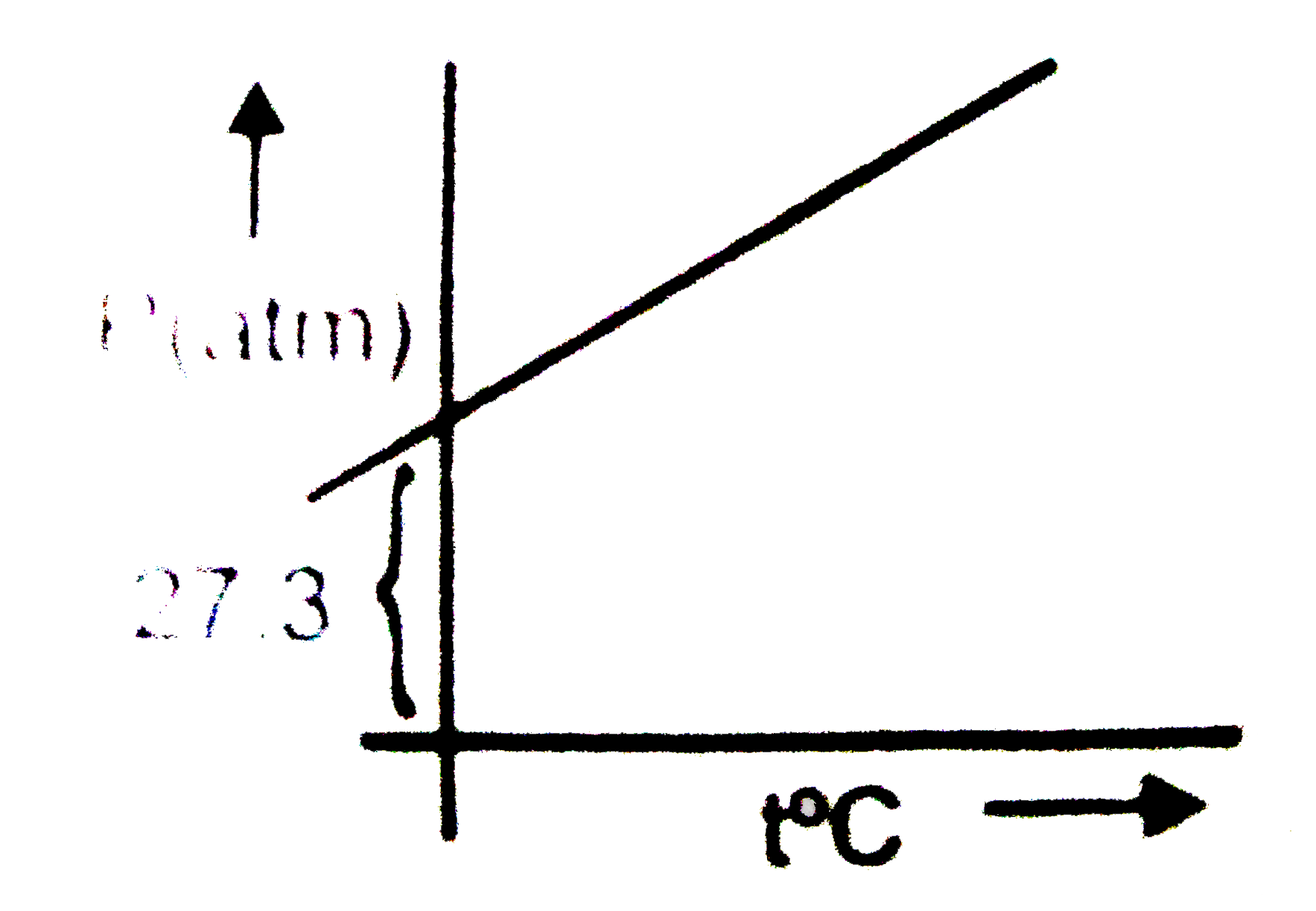The temperature at which real gases obey the ideal gas laws over a wide range of low pressure is called:Solution in Telugu
Critical temperature
Inversion temperature
Boyle temperature
Reduced temperature
The correct Answer is:c
(c) At Boyle's temperature and low pressure Z =1.
At low pressure Z=1+(b−aRT)1Vm
At TB=a/Rb, Z=1
because T>Ti and if gas expanded adiabatically then T↑
Topper's Solved these Questions
- GASEOUS STATEBOOK - NARENDRA AWASTHICHAPTER - GASEOUS STATEEXERCISE - Level 2
1 Videos
- GASEOUS STATEBOOK - NARENDRA AWASTHICHAPTER - GASEOUS STATEEXERCISE - Level 3 - Passage
1 Videos
- GASEOUS STATEBOOK - NARENDRA AWASTHICHAPTER - GASEOUS STATEEXERCISE - Level 1 (Q.121 To Q.150)
1 Videos
- ELECTROCHEMISTRYBOOK - NARENDRA AWASTHICHAPTER - ELECTROCHEMISTRYEXERCISE - Level 3 - Subjective Problems
1 Videos
- IONIC EEQUILIBRIUMBOOK - NARENDRA AWASTHICHAPTER - IONIC EEQUILIBRIUMEXERCISE - Assertin-Reason Type Questions
1 Videos
Similar Questions
A graph is plotted between p (atm) vs t∘C for 10 mol of an ideal gas as follows:
Then slope of curve and volume of container (L) respectively, are:

View SolutionCollision cross-section is an area of an imaginary sphere of radius σ around the molecule within which the centre of another molecule cannot penetrate.
The volume swept by a single molecule in unit time is

V=(πσ2)¯u where ¯u is the average speed
If N∗ is the number of molecules per unit volume, then the number of molecules within the volume V is
N=VN∗=(πσ2¯u)N∗
Hence, the number of collision made by a single molecule in unit time will be
Z=N=(πσ2¯u)N∗
In order to account for the movements of all molecules, we must consider the average velocity along the line of centres of two coliding molecules instead of the average velocity of a single molecule . If it is assumed that, on an average, molecules collide while approaching each other perpendicularly, then the average velocity along their centres is √2¯u as shown below.

Number of collision made by a single molecule with other molecule per unit time is given by
Z1=πσ2(¯urel)N∗=√2πσ2¯uN∗
The total number of bimolecular collisions Z11 per unit volume per unit time is given by
Z11=12(Z1N∗)orZ11=12(√2πσ2¯uN∗)N∗=1√2πσ2¯uN∗2
If the collsion involve two unlike molecules then the number of collisions Z12 per unit volume per unit time is given as
Z12=πσ212(√8kTπμ)N1N2
where N1 and N2 are the number of molecules per unit volume of the two types of molecules, σ12 is the average diameter of the two molecules and μ is the reduced mass. The mean free path is the average distance travelled by a molecule between two successive collisions. We can express it as follows :
λ=Average distance travelled per unit timeNO. of collisions made by a single molecule per unit time=¯uZ1
or λ=¯u√2πσ2¯uN∗⇒1√2πσ2¯uN∗
For a given gas the mean free path at a particular pressure is :
View SolutionDimethyl ether decomposes as
CH3OCH3(g)→CH4(g)+CO(g)+H2(g)
When CH3OCH3(g) decomposes to 20% extent under certain conditions, what is the ratio of diffusion of pure CH3OCH3(g) with methane?
View SolutionA solution containing 1MXSO4(aq) and 1MYSO4(aq) is electrolysed. If conc. Of X2+ is 10−zM when deposition Y2+ and X2+ starts simultaneously, calculate the value of Z.
Given: 2.303RTF=0.06
E∘x2+|X=−0.12V,E∘Y2+|Y=−0.24V
View SolutionSTATEMENT-1: All strong monoprotic acid with same concentration in dilute solution show same pH.
STATEMENT-2: Water shows levelling effect.
View SolutionThe temperature at which a real gas obeys the ideal gas laws over a wide range of pressure is called
View SolutionUp to what pressure a gas will follow the ideal gas law depends upon the nature of the gas and its temperature . The temperature at which a real gas obeys the ideal gas law over an appreciable range of pressure is called
View SolutionThe temp. at which a real gas obeys ideal gas law over an appreciable range of pressure is called :-
View SolutionThe temperature at which a real gas obeys the ideal gas laws over a wide range of pressure is called
View SolutionThe temperature at which a real gas obeys the ideal gas laws over a wide range of pressure is called
View SolutionThe temperatures at which real gases obey the ideal gas laws over a wide range of pressure is called
View SolutionThe temperature at which a real gas obeys ideal gas law over an appreciable range of pressure is called __________.
View SolutionThe temperature at which a real gas obeys the ideal gas laws over a wide range of pressure is called
View SolutionThe temperatures at which real gases obey the ideal gas laws over a wide range of pressure is called ..
View SolutionThe temperature at which a real gas obeys the ideal gas laws over a wide range of pressure is called
View SolutionThe temperature at which real gases obey the ideal gas laws over a wide range of low pressure is called: (a)Critical temperature (b)Inversion temperature (c)Boyle temperature (d)Reduced temperature
View Solution
